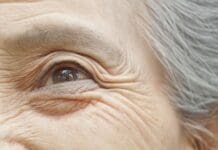Snoring is a common, yet somewhat dangerous condition that affects roughly 45% of adults on an occasional basis, with 25% of adults snoring regularly.
In most cases, snoring isn’t directly dangerous. But here’s the issue—when it keeps people awake, that’s when it starts to cross over into ‘destructive’ territory.
And obstructive sleep apnea, of which snoring can be a symptom, is a lot more severe and dangerous.
Obstructive sleep apnea is basically a sleep disorder wherein the loose tissues of the upper airway actually collapse and keep you from breathing during sleep.
A lot of people mistake OSA for regular snoring. But it’s actually a lot worse and more dangerous.
OSA results in the individual ceasing to breathe for a period of roughly 6 to 10 seconds, after which they will experience a small ‘jolt’ awake as their brain, which detects that they aren’t breathing, pulls them out of REM sleep and subconsciously causes them to tighten up their airway muscles.
OSA is dangerous because it can lead to severe sleep deprivation, as people who suffer from it may constantly be getting pulled out of REM sleep without even realizing that it’s happening.
And over time, this can lead to long-term and far-reaching health complications.
In a recent CNN news report, they outlined 8 warning signs to look for, to let you know that you may be at risk of suffering from OSA (or that you may already be suffering from it).
Let’s dive in and take a look at them.
8 Warning Signs Of Obstructive Sleep Apnea
Here are 8 risk signs that you may be suffering from obstructive sleep apnea without even realizing it.
- You snore
- You feel tired during the day
- People around you have ‘observed’ that your breathing stops for a few seconds off and on during the night
- High blood pressure
- You experience unexplained weight gain
- You’re getting older—our risk for experiencing OSA increases as we get older
- You have a large neck circumference—if you have a lot of fatty tissue around your neck, then you may definitely be at a greater risk for sleep apnea
- You’re a man—men are more likely to suffer from OSA than women are
What Should You Do About It?
There are various treatment options and lifestyle changes that you can explore to help treat or even remove your sleep apnea altogether.
Some of these include:
- Better sleep hygiene habits
- Weight loss
- CPAP
- Using an anti-snoring device that’s authorized to treat sleep apnea (there are some mandibular advancement devices available on the market that can be used for this purpose)
- Quitting smoking
- Getting more exercise
- Sleeping on your side instead of on your back
But here’s the bottom line.
If you think that you may be suffering from OSA, then you should definitely visit your doctor.
Your doctor may order a sleep test to determine for sure whether or not you’re suffering from the condition, and can help you to figure out a treatment plan if it turns out you’re already struggling to get enough sleep.
Sleep is an essential pillar of health and wellness. And OSA is dangerous to that process. So getting it sorted out is truly the key.












